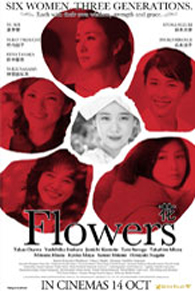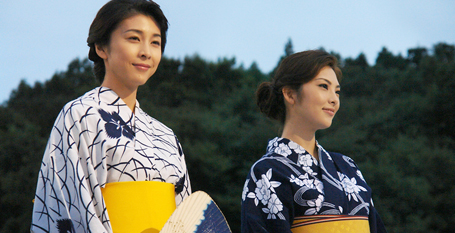
Possibly the best film the late Satoshi Kon made was Millennium Actress. Through the eyes of its titular actress protagonist Chiyoko, Kon’s film encompassed the history of Japanese filmmaking and evoked the changing visual styles and moods of film genres over decades. At the same time, Kon’s film captured the changing role of women in society and like other stellar ‘women’s films’ made by Mikio Naruse and Kenji Mizoguchi, sensitively answered the perennial question “What is it like to be a woman?”
I say all this because Flowers is quite possibly the closest a live action film can get to the scale and storytelling that Millennium Actress did so effortlessly as an animation. Flowers is told through the eyes of 6 women – played by the 6 most beautiful and popular young actresses in Japan right now – in 6 shorts that inter-cut with each other throughout the film. The 6 story segments are filmed in the style and genre that were predominant in the period they are set in.
There is the young bride in Showa Japan who refuses to get married, to the consternation of her overbearing father. That is shot in black and white world where cherry blossoms never fail to fall and never seem to stop falling when you’re running across a field. There are her three children from that marriage – a single aspiring career woman in a 1960s Toho-style working class comedy, a touching story about the love and obsession of a young widow, and a melodrama about a mother who would risk her life for her unborn child. Then in the modern segment, the remaining two protagonists of the family must grapple with the issue of parenthood and family.
As an aesthetic exercise, Flowers works best when recreates – down to the smallest detail – the film genres and styles of previous eras. Traversing from comedy to melodrama to family drama, the film does work itself into a predictable but powerful triple-hanky conclusion. Its best moments though are in its recreation of 1930s and 1960s film styles.

